What Does the Internet Computer Actually Do?
What does the IC actually do? What problems does the IC solve? And where does the IC stack up against the thousands of alternative coins on the market?
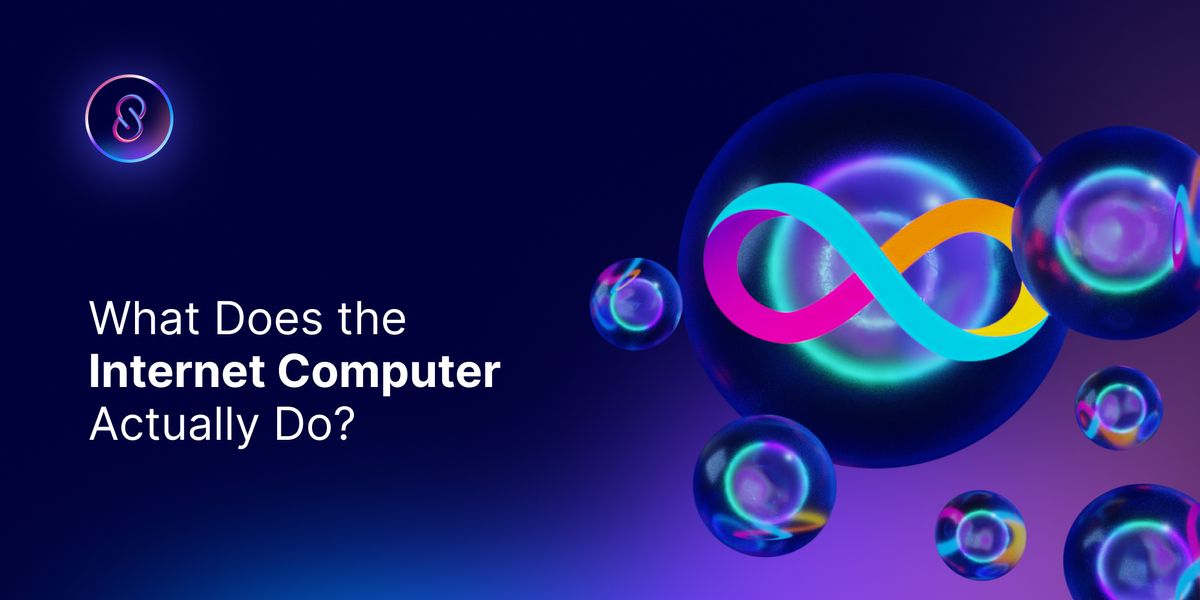
Blockchain technology is in the process of revolutionizing society and changing the world as we know it. In the fifteen years since the world received the gift of Bitcoin from Satoshi Nakamoto, the cryptocurrency industry has blossomed into a massive market, with 20k+ crypto coins available for purchase across a variety of different centralized and decentralized exchanges.
Of these 20k+ coins, there is a huge amount of variety. While there are coins out there that are absolute blue chips with a high degree of intrinsic value, like Ethereum and Bitcoin, there are far more out there that have none. It can be difficult to separate the real players from the cash grabs and rug-pulls.
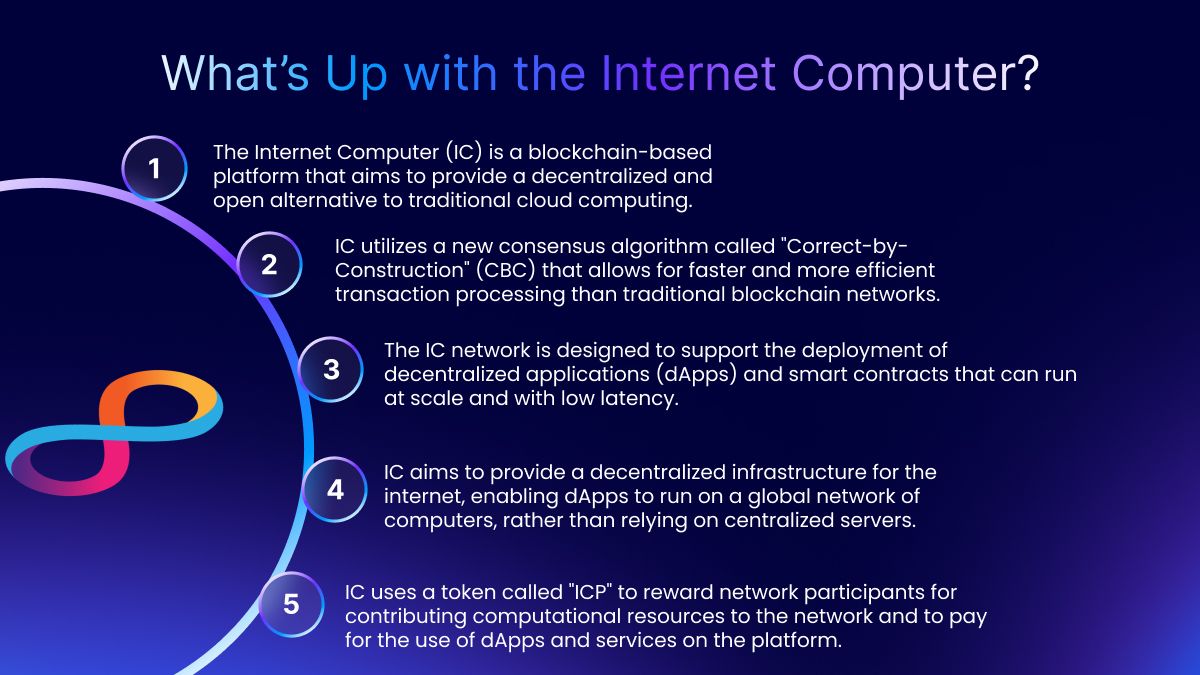
With this in mind, it is worth asking some questions when we look to invest in the IC. What does the IC actually do? What problems does the IC solve? And where does the IC stack up against the thousands of alternative coins on the market?
By exploring and answering these questions, hopefully, we can shed some light on why ICP is a great investment and why it will thrive as time goes on.
How Does the IC Function?
At its core, the IC works using an implementation called Threshold Relay Consensus, which is an optimized version of Proof-of-Stake, the consensus model recently implemented by Ethereum after the merge. The consensus model was initially designed for a permissioned participation model. However, it can be paired with any method of Sybil resistance for an open participation model.
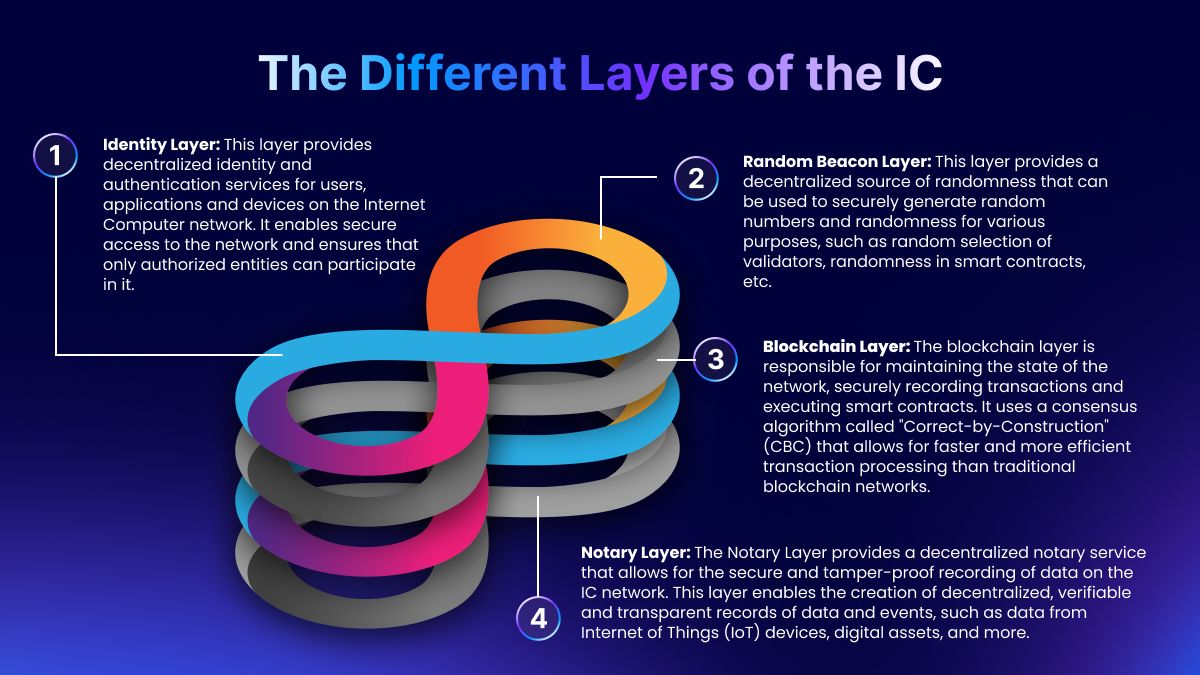
The consensus mechanism is broken into four layers;
The Identity Layer; which provides a registry for all clients.
The Random Beacon Layer; which uses a Verifiable Random Function to provide a source of randomness.
The Blockchain Layer; which is driven by this randomness, and uses verified transactions to build a blockchain.
The Notary Layer; which provides fast finality to network clients.
Each layer has its own place in the consensus system and is intrinsic in allowing the IC network to function quickly and efficiently as it needs to. This layered configuration of consensus is a large factor in the innovative nature of the IC network. By carrying out consensus in this way, the IC has been able to be faster and more scalable while also remaining fully secure.
What are Canisters?
Fundamentally, the IC is a blockchain purpose-built to allow developers, organizations, and entrepreneurs to build and deploy canisters, a secure and tamper-proof evolution of Ethereum's smart contract technology.
Much like with smart contracts on Ethereum, canisters combine code and state together in a tidy package, making it possible to create a cryptographic ledger on the blockchain that can be transacted in an efficient manner.
For dApp developers, the IC provides a number of helpful features.
For starters, the IC is a globally accessible blockchain that exists in the public domain and can be accessed by anyone over an internet connection. Canisters run at web speed and can serve users with interactive content.
The IC essentially works by converting crypto into computing power, which is an innovative idea in the space. The network establishes a fee based on the computing power required by a developer's project. This method of gas implementation, "The Reverse Gas Model," means that dApps can be made more scalable and efficient, and steep gas fees can be eliminated for end users.
Running by way of nodes that form a network, the IC forms a fully decentralized global system. These nodes run on a secure cryptographic protocol known as the Internet Computer Protocol. Nodes are operated by individual operators, spread out across the global decentralized IC network. As with other cryptocurrencies, decentralization serves to remove centralized control of the network and eliminate the need for the trust of a third party when carrying out transactions.
The power of the IC network is enormous, and theoretically, in the future, all manner of different dApps can be built on the network. The future of social media, the metaverse, gaming, and more will exist on decentralized computing platforms. The IC is built to facilitate this wide range of development and is already hosting a variety of different dApps of various different types.
What are some Features of the IC Blockchain?
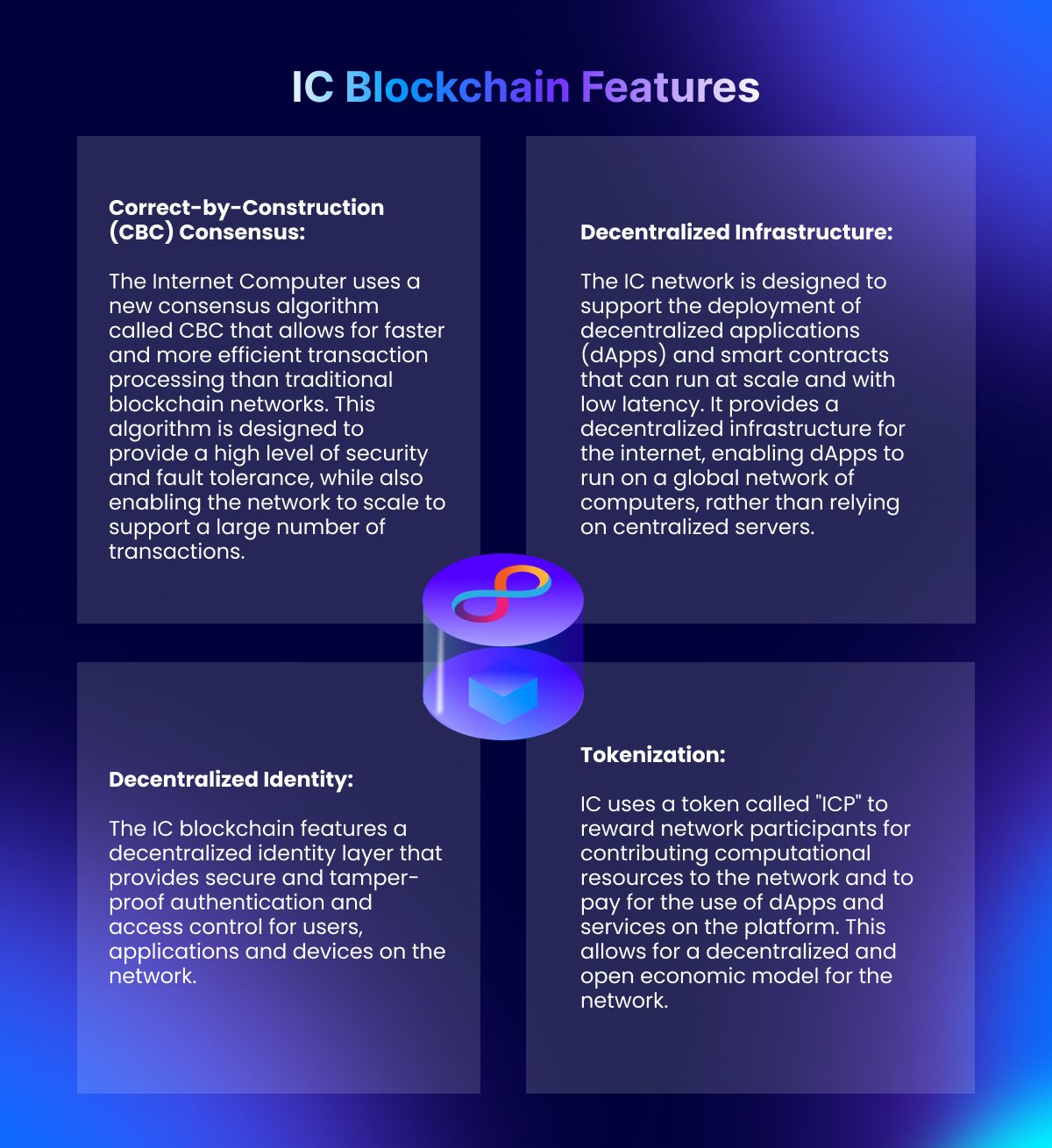
Through the use of Chain Key Cryptography, the IC serves to facilitate the creation of a network of blockchains by integrating existing blockchain technologies with the IC network. This is being achieved in a variety of different ways, with some Bitcoin and Ethereum integrations having already been implemented and with more on the way.
The IC is made up of individual subnet blockchains, which run in parallel and are connected using the aforementioned Chain Key Cryptography. With this system, canisters can call other canisters hosted on any other subnet without interruption.
Another feature of the IC blockchain is the Network Nervous System, a decentralized governance system that is permissionless and runs completely on-chain. The NNS has the ability to make decisions on a variety of different subjects; updates that may be implemented on the IC blockchain, scaling of the IC blockchain by the implementation of new subnets, changing the configuration of the blockchain, and many more.
Governance of the IC blockchain through participation in the NNS is open to anyone; all a user needs to do is stake ICP and create a Neuron. Those that participate in the NNS can submit new proposals and can vote for open proposals.
The system employed by the NNS is called liquid democracy. Neurons can vote on proposals manually or follow the vote of other Neurons. Neurons must be locked for a specific time through staking to be eligible for voting (between 6 months and 8 years).
Voting rewards are then distributed amongst stakers. Rewards are distributed daily as "maturity," which can either be merged or spawned, becoming either more ICP or another Neuron. The system allows for dynamic governance of complex issues which affect the health of the network.
What Problems does the IC Solve?
As a fully decentralized network of nodes, the IC goes beyond simply being a cryptocurrency. The network functions across a number of different planes, making development easier and allowing engineers to focus solely on code.
Issues solved by the IC network include; database configuration and maintenance, load balancing services, firewalls, network topology, port management, physical and virtual network configuration requirements, and storage volumes.
Simplifying the development process means that the IC network can grow quickly, with fewer roadblocks to slow developers' progress. Simplification of the development process means that there are fewer opportunities for bugs to appear in the developer's code, making the network more secure, more reliable, and less exposed to hacks than others.
In terms of storage, the IC allows for decentralized storage of data, removing the need for centralized cloud storage, which the computing world has become majorly dependent on during the lifespan of the internet. This provision of decentralized storage makes it realistic to assume that the implementation of storage solutions will change fundamentally over the next few years, thanks in large part to the IC's innovative technology.
Is the IC Attempting to Replace the Centralized Cloud?
The Centralized Cloud will be replaced, whether the IC were to exist or not. With this in mind, the mission of replacing the Centralized Cloud would not be enough to justify the IC's existence.

No, the IC has a much broader raison d'être than that.
The IC network seeks to provide a rich ecosystem where developers can create and thrive, free of limitations on other blockchains. Creating an environment that developers love, that allows them to produce their best work, pushes blockchain technology and the cryptocurrency space as a whole forward faster.
Integrated features, such as decentralized storage, mean that the IC is a more complete blockchain than any of the others out there, Ethereum included. While decentralized storage solutions are already in existence, none are built into a blockchain in the same way as the IC. By creating a unified system, the IC positions itself as the most integrated, most efficient, most user-friendly (and developer-friendly) blockchain out there. The potential is huge.
"The Future is Multi-chain," and the IC is making that future more of a reality daily with cross-chain integrations.
How Does the IC Affect Global Computing?
Through a decentralized network of data centers used to create a storage network via subnets, the IC has been able to create a global computing system, which breaks new ground for the management of data. Given the staggering amount of data that is produced by the internet on an annual basis, the world needs novel ways of managing the mountain of data that is being produced.
It is tempting to view the IC blockchain as simply being another crypto coin, but in reality, it is far more than that. The IC is really a revolutionary technology which can change the way that data is handled completely in the longer term.
The use of open standards to store data via the IC is a welcome improvement on the potential restrictions that come with the use of centralized storage solutions which are overseen by a centralized entity. In the case of centralized storage, potential conflicts of interest can arise when providers are required to host services which are in competition with their own interests.
The advent of IC technology ushers in a new era in computing. Over time the fundamentals of how we store and manage data will change. The landscape of global computing looks set to change dramatically over the coming years as levels of adoption increase.
Will the Blockchain Singularity Ever Be Achieved?
Blockchain singularity is a term used to describe the point at which blockchain technology becomes so widely adopted as to become an integral part of people's day-to-day lives. The phrase has been coined as an adaptation of the term "technological singularity," a phrase which describes the moment when AI surpasses human intelligence.
The term 'blockchain singularity' describes the place blockchain technology needs to get to quite well. In the relatively near future, crypto is aiming to become an integral part of the financial and social system. Over time, the aim of crypto is to completely replace the traditional financial system, a goal that will require some serious infrastructure to be built and maintained. The innovations of today shape the financial system of tomorrow.
The mission of the IC is to push us towards this point of mass adoption by creating a decentralized world computer atop which developers can build the decentralized internet as they envision it. No compromises, no fragmentation, simply an integrated network, allowing blockchain technology to be maximized in terms of use cases and ultimately perfected.
This moment of singularity is an important milestone for blockchain technology to achieve if it is to be successful. The work of the IC towards achieving the moment of blockchain singularity will define the success of the crypto space as a whole in the longer term.
Is Speed Really that Important?
The relevance of the IC network's ability to function at web speed should not be underestimated. With transactions taking place at these speeds, the IC blockchain makes itself an attractive option for dApps which otherwise could not entertain entry into the crypto space. While other blockchains, such as Ethereum, require excessive time for block confirmation, especially at times of high network traffic, the IC allows for transactions to happen almost instantly. The difference cannot be overstated.
On a practical level, speed is a feature that the cryptocurrency space as a whole requires. Speed is absolutely crucial to many of the services that are carried out on the wider internet today, and so it stands to reason that speed will be absolutely crucial to the success of blockchains going forward. Mass adoption depends on speed.
Where Does the IC Go From Here?
The IC development team is constantly innovating, and the network is constantly being improved. While the blockchain is, at the moment, an amazing piece of innovation, there are even better things happening every single day.
With this in mind, it looks as though the IC blockchain will go from strength to strength from here on out, and the imminent tokenization through the ICRC-1 on InfinitySwap's AMM will spark a frenetic period of growth on the Internet Computer.
Connect with InfinitySwap
Bitfinity Wallet |AMM | Twitter | Website | Telegram | Discord | Github



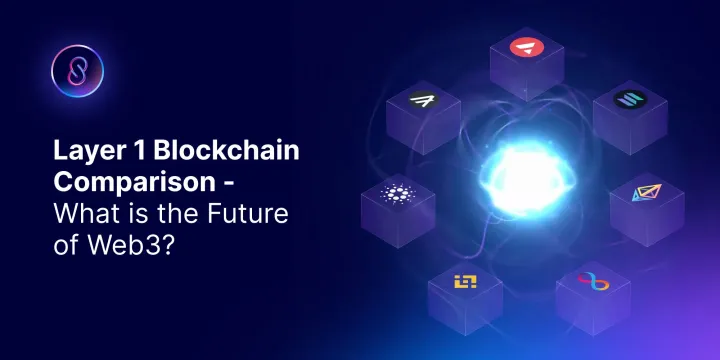


Comments ()